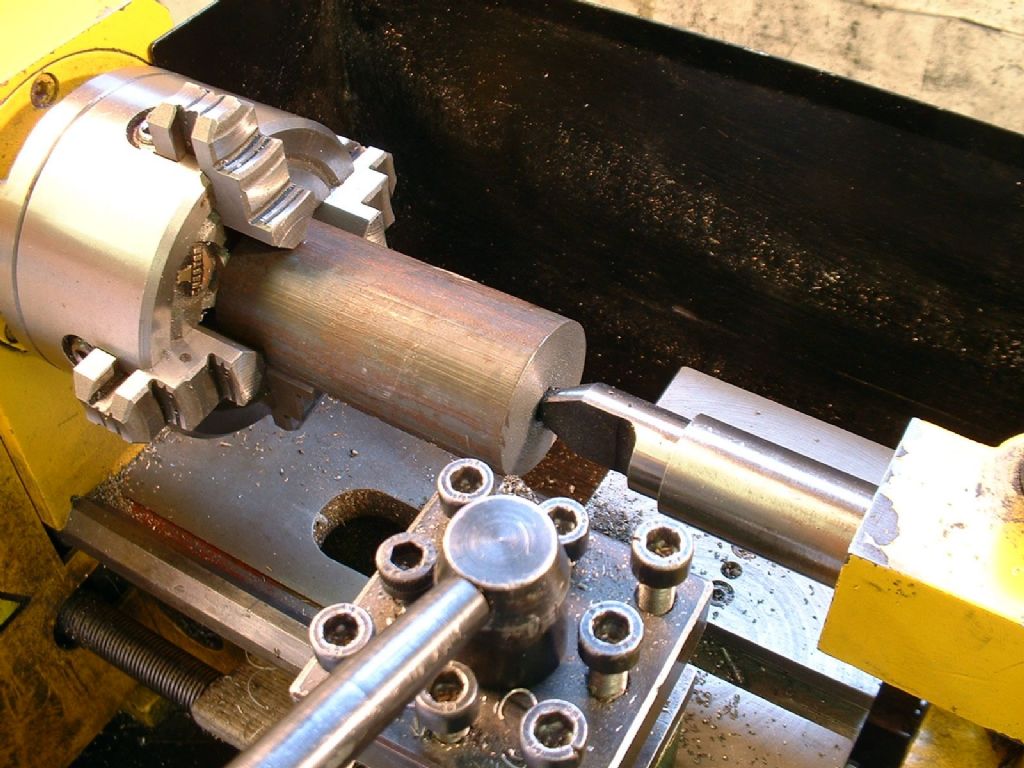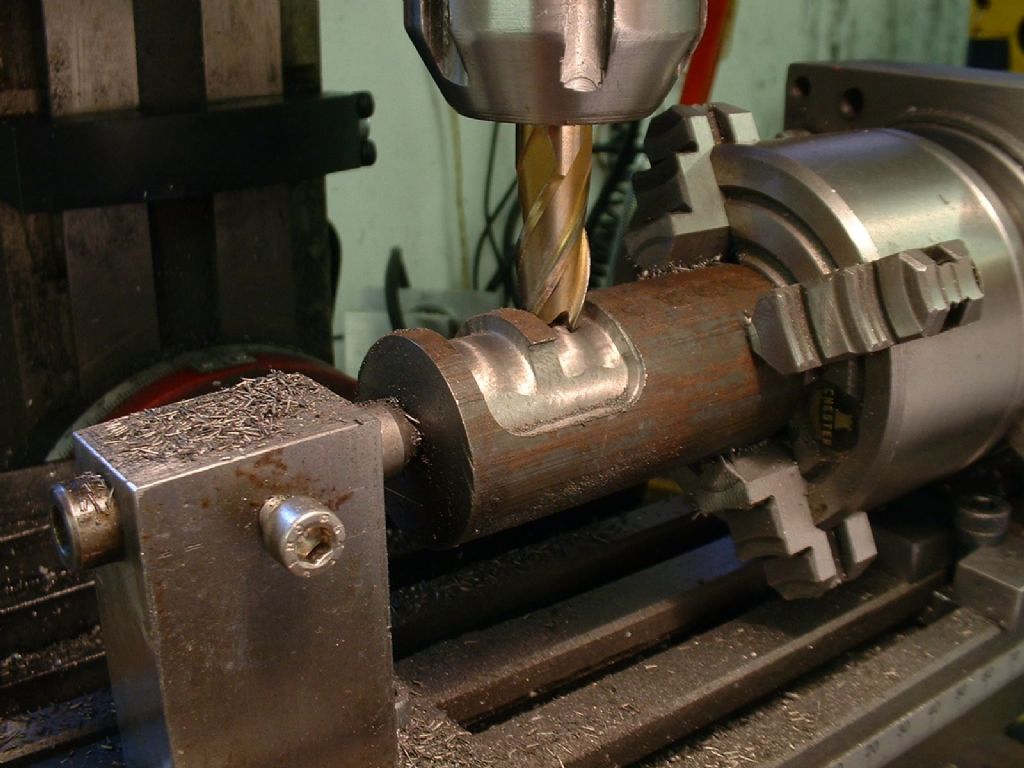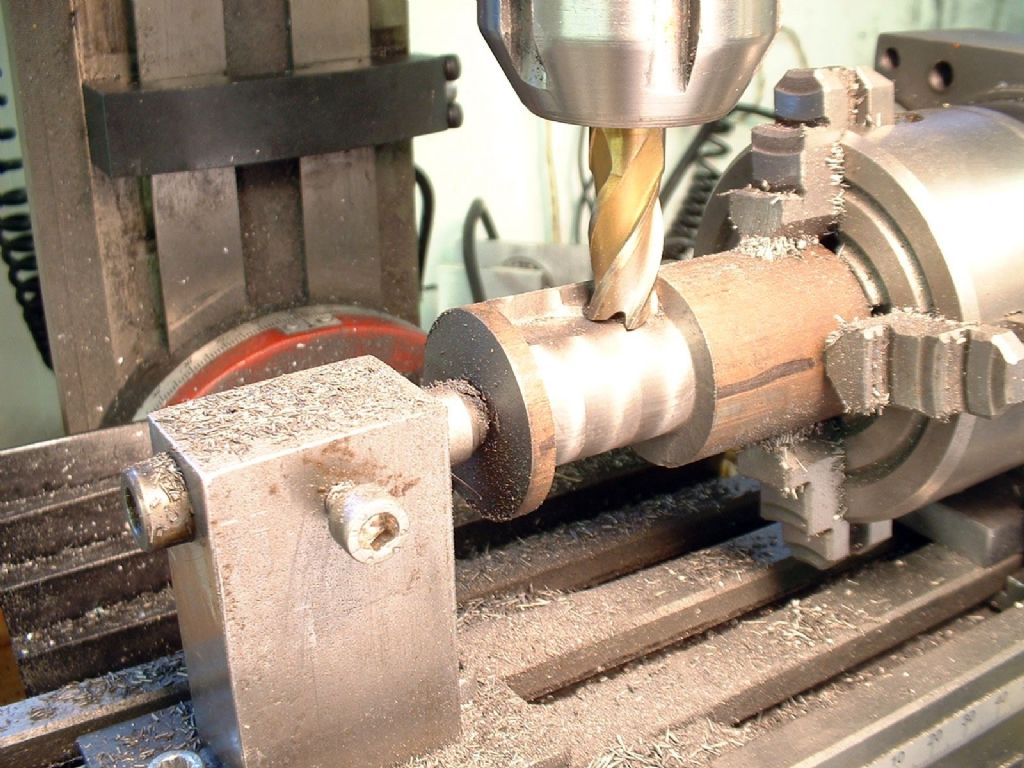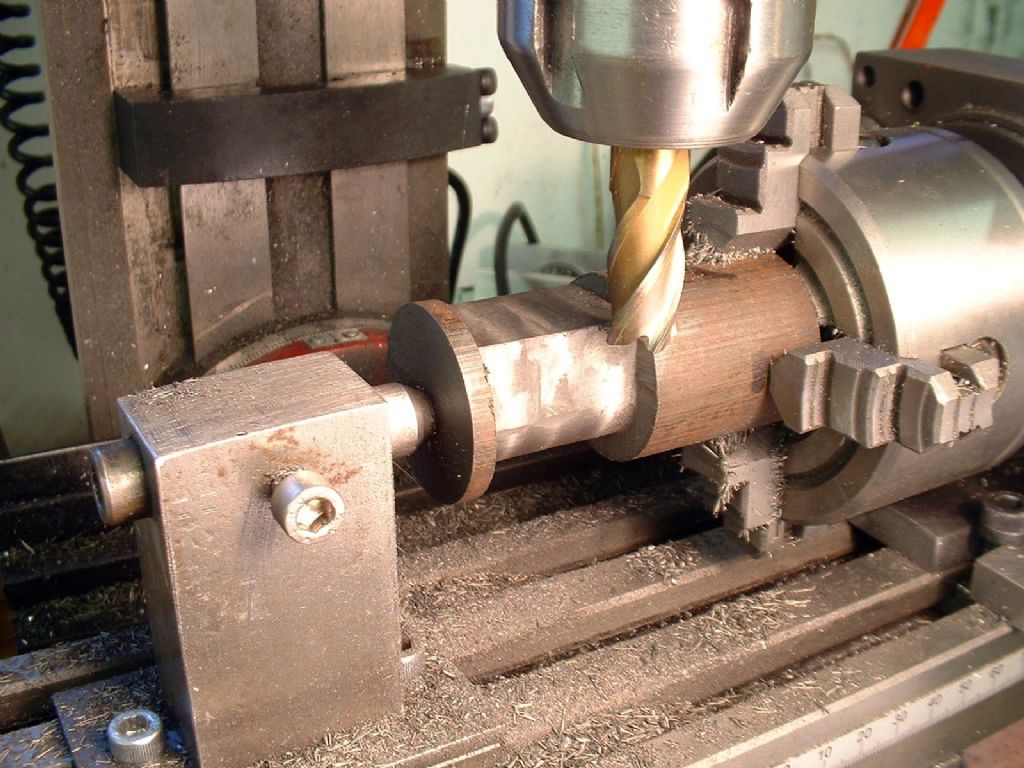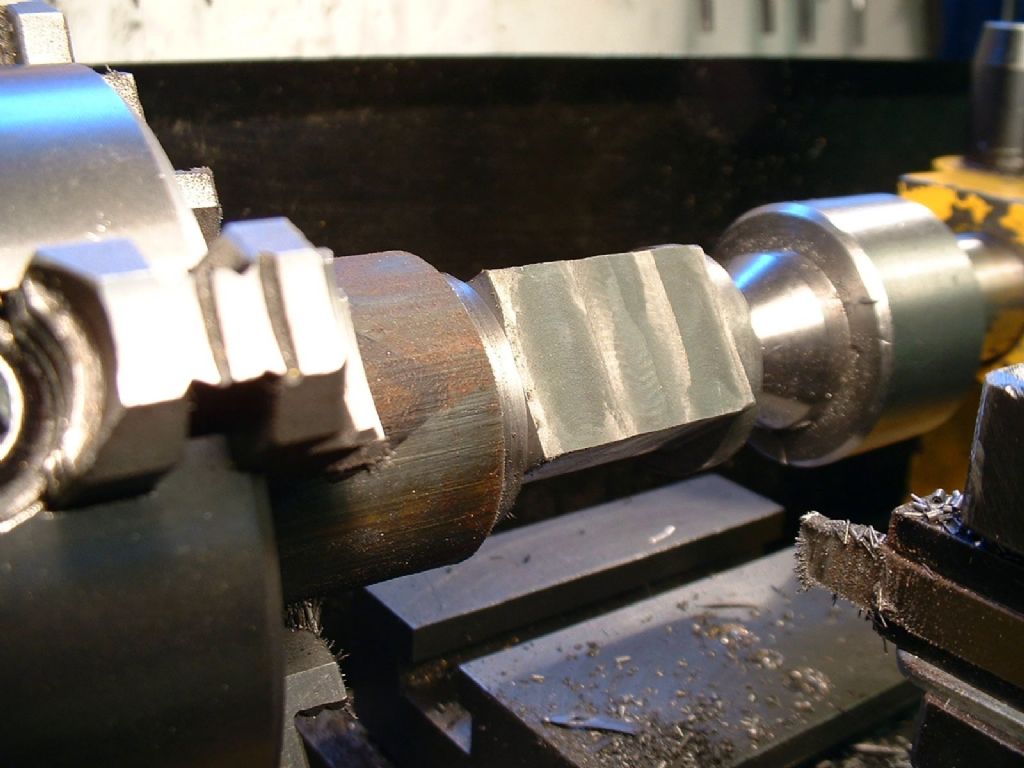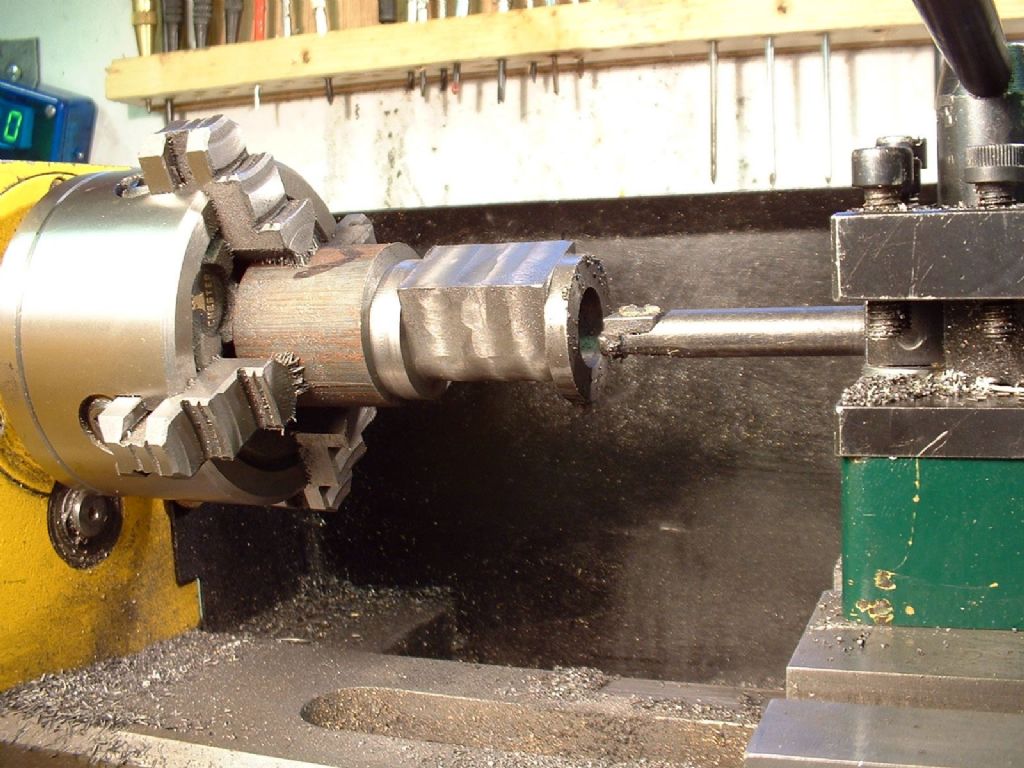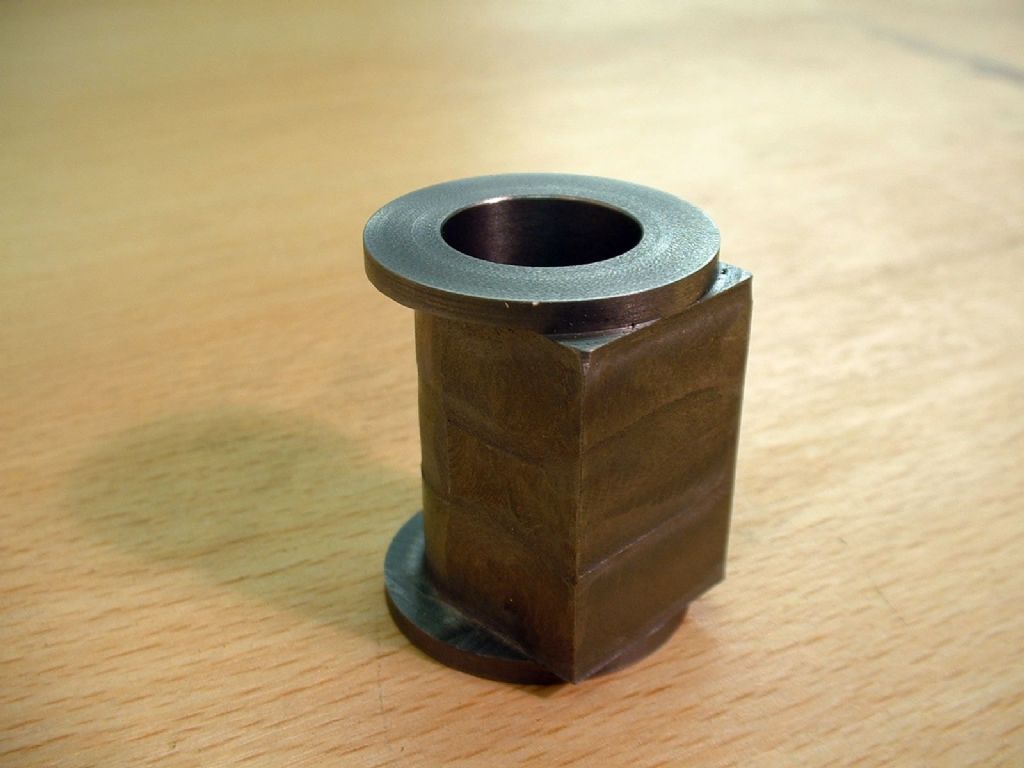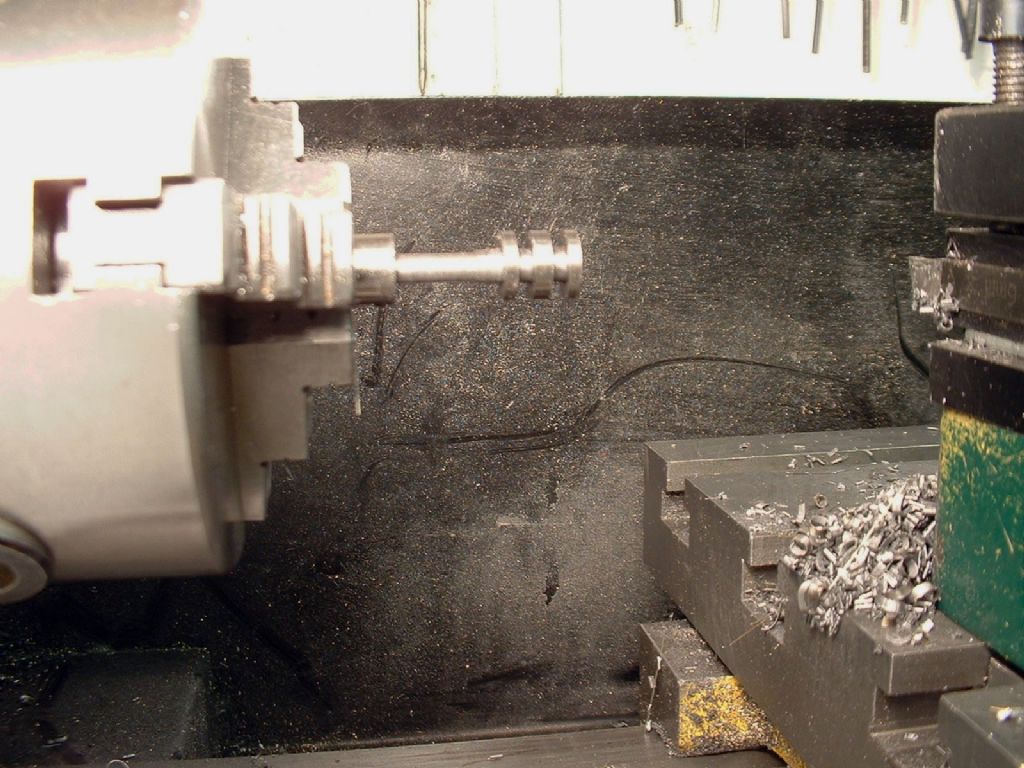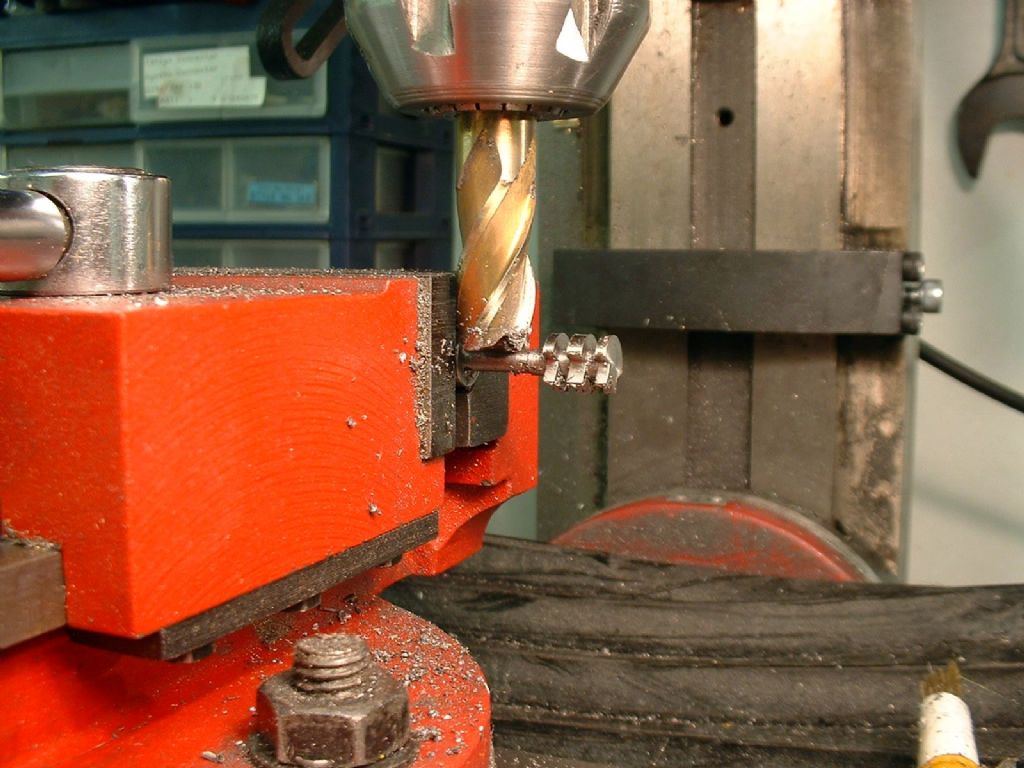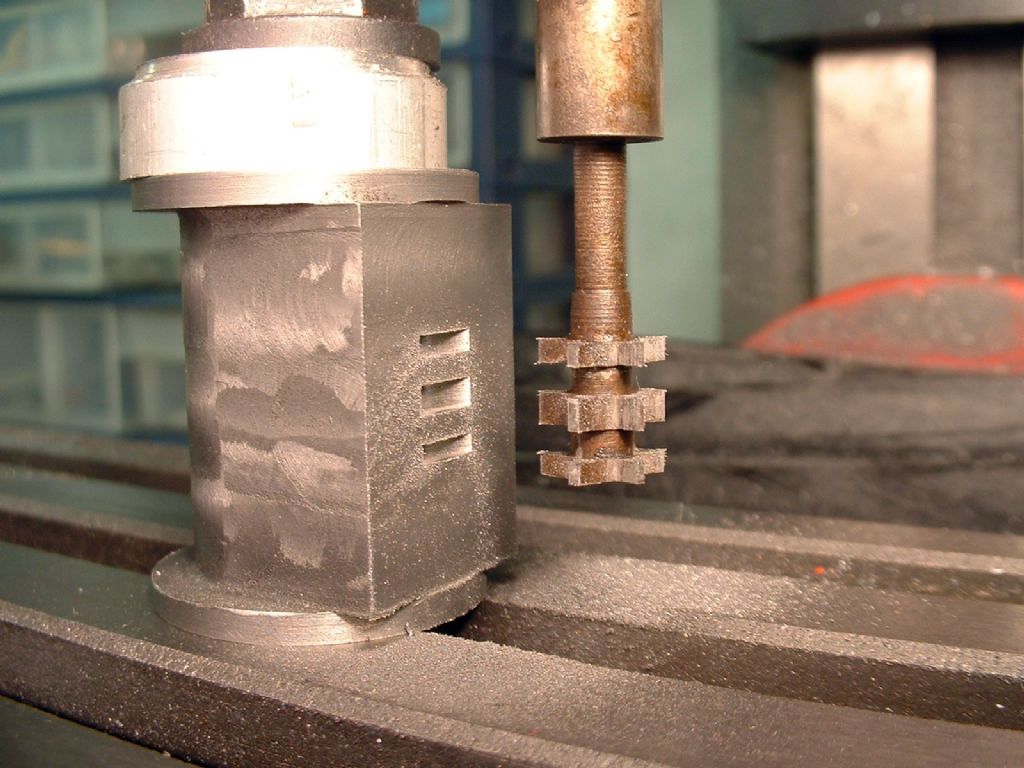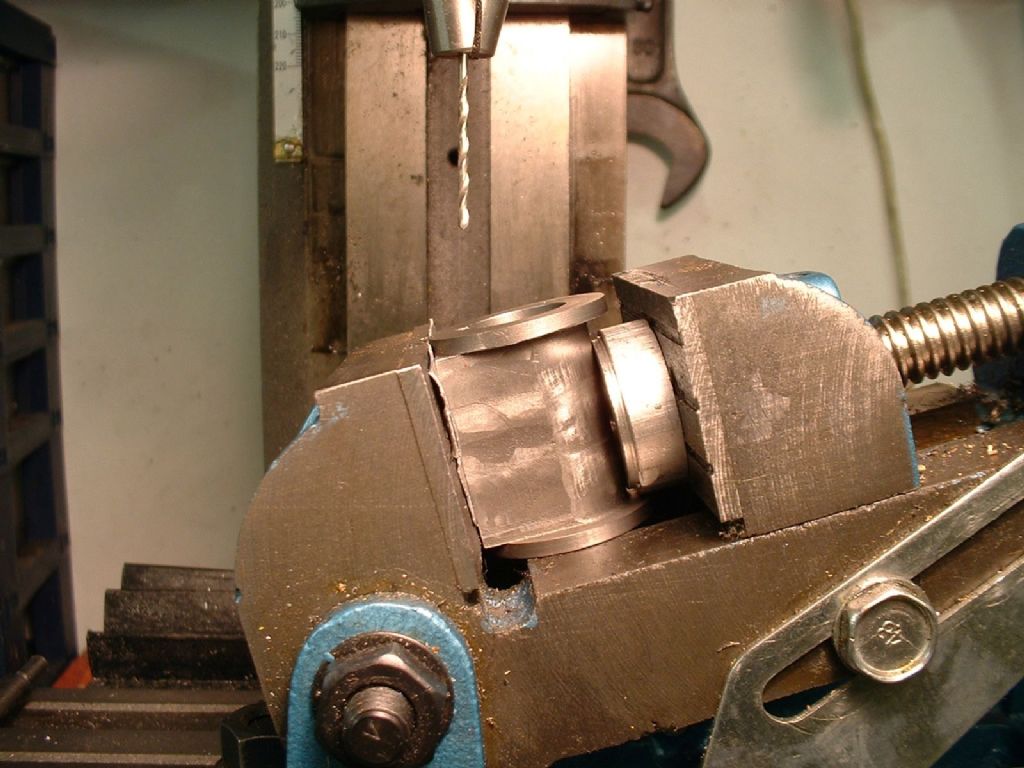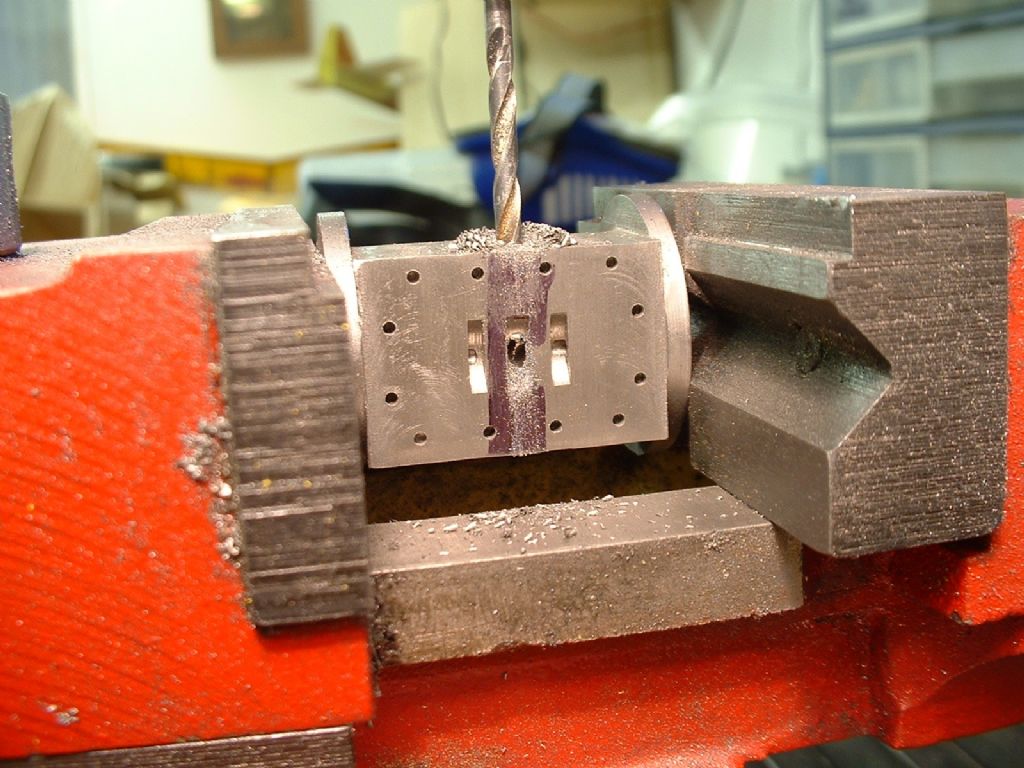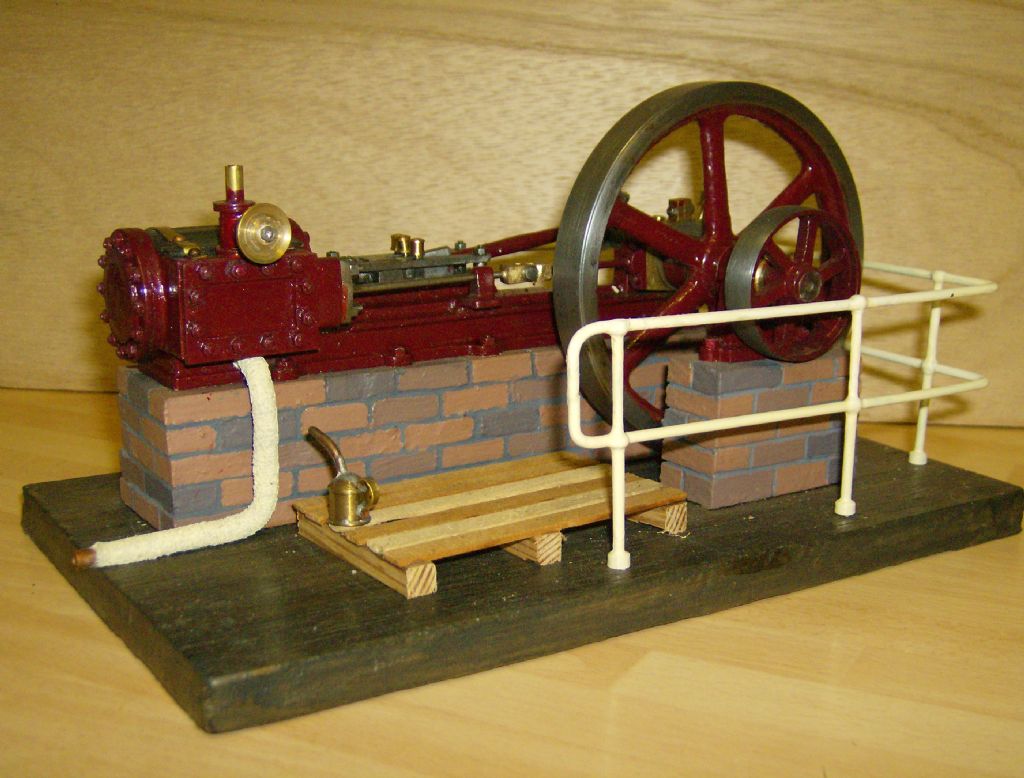I clamped the cylinder to the milling table (you could equally clamp it to the vertical slide on a lathe), with the valve face perpendicular to the long axis of the table. I used an edge finder to locate one side of the valve face. This is a ‘ball on a stick’ which when spinning over a surface stays still, until they are precisely aligned, when it ‘runs’ along the surface. My ball is meant to be .250″, but I miked it at .248”. A difference well worth being aware of if you are going to the bother of using such an aid to setting up! I advanced the cross slide by half the width of the valve face plus half the width of the ball. I now had to fiddle a bit to get the cutter exactly half way up the valve face, ensuring the chuck would clear the fixing bolt.
I was very apprehensive that such a delicate looking cutter would bend or break if it dug into the work. With two sets of teeth in the work at once the total cut length would be 7/16″, which is an awful lot for a tool shank about 3/16″ in diameter. I ran the cutter at about 500 rpm, and fed the work into it very, very slowly. To my satisfaction, the swarf came out more like fine dust than chips, building into a neat cone beside the cylinder. The result was absolutely perfect, far better than I could have achieved with an end mill. It seems like the old guard knew a thing or two.
OldMetaller.


